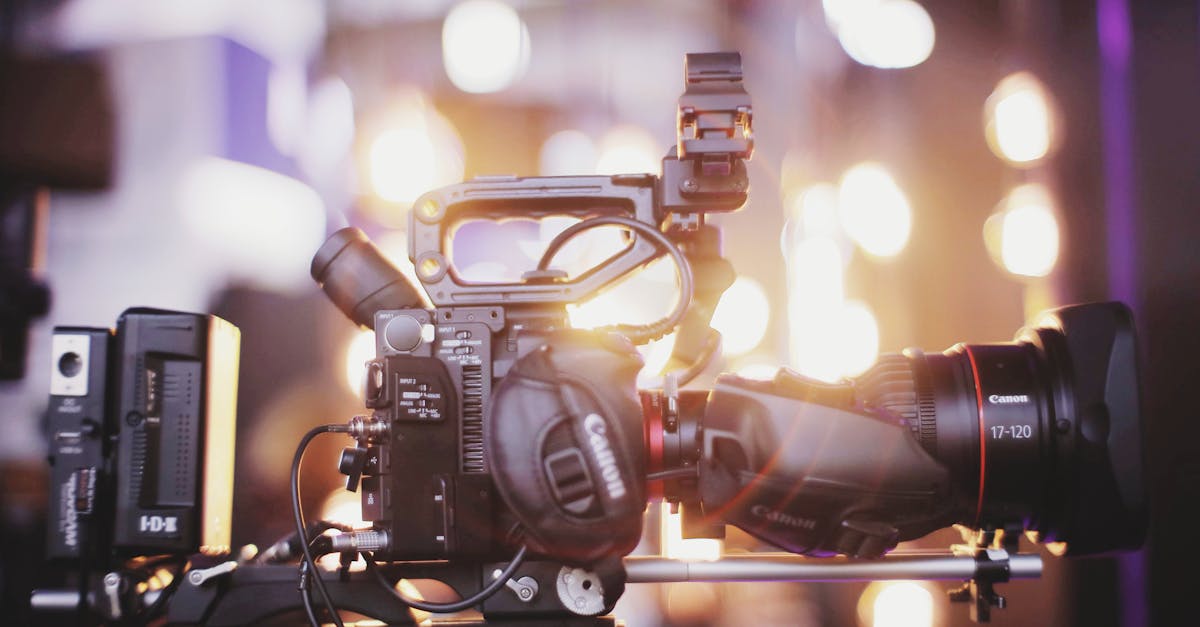
Pre-production planning
Table Of Contents
At Gaf Production, we specialize in providing top-notch pre-production planning services for all your video production needs. Our skilled team works closely with clients to carefully outline every aspect of the project, from script development and storyboarding to scheduling and budgeting. By thoroughly planning ahead, we ensure that all elements of your video production are organized and executed seamlessly. With our expertise and attention to detail, you can trust Gaf Production to bring your vision to life in a way that is both creative and professional. Let us take the stress out of pre-production planning so you can focus on achieving your video production goals.
Production Design and Set Preparation
Production design and set preparation are crucial aspects of the pre-production phase in video production. It involves creating a visually appealing and cohesive look for the scenes to be captured on camera. This process requires careful planning and coordination to ensure that the sets align with the overall vision of the project. From conceptualizing visual elements and props to scouting suitable locations, every detail plays a key role in bringing the screenplay to life.
Moreover, attention to detail is essential when preparing the sets for shooting. It's not just about the physical aspects like props and costumes, but also about considering the mood and atmosphere that the sets convey to the audience. A well-designed set can enhance the storytelling and help immerse viewers in the narrative. Therefore, filmmakers must work closely with production designers and set decorators to meticulously plan every aspect of the set to ensure a seamless shooting experience.
Conceptualizing Visual Elements and Props
Conceptualizing visual elements and props is a crucial aspect of pre-production planning in video production. This involves envisioning the look and feel of the project, from the set design to the smallest details like props. Creativity plays a significant role in this stage as video producers work alongside production designers to bring the script to life visually. Whether it's a period piece set in the 1800s or a modern-day documentary-style video, every element needs to align with the overall vision of the project.
Moreover, attention to detail is key when conceptualizing visual elements and props. From the placement of paintings on the wall to the design of a telephone on the kitchen table, every item contributes to creating a cohesive and immersive atmosphere for the audience. Additionally, considering camera angles and perspectives during the pre-visualization stage can enhance the overall visual storytelling. By paying close attention to these elements during the creative process, video producers and production designers can ensure that every frame captures the essence of the story being told.
Scheduling and Coordination
Scheduling and coordination are pivotal aspects of the video production process, ensuring that all elements align seamlessly to bring the project to life. Embracing digital tools such as Microsoft Excel for creating detailed shot lists and scheduling shoots efficiently can streamline operations. Collaboration between the production team, including the director, cinematographer, and production coordinator, is essential for optimizing time and resources effectively. Fine-tuning the daily call sheet to reflect all necessary details, from location and talent requirements to equipment needs and transportation logistics, can aid in maintaining a structured workflow throughout the production phase.
When faced with budget constraints, it is imperative to strike a balance between maintaining high production standards and adhering to financial limitations. This may involve negotiating favourable rates with vendors, choosing cost-effective shooting locations, or exploring creative solutions to achieve the desired aesthetic without compromising quality. Additionally, keeping abreast of industry trends and attending relevant film festivals can provide valuable insights into target audience preferences and emerging techniques, enhancing the production's appeal and marketability. Tailoring the shooting schedule to accommodate the team's availability and leveraging digital communication tools such as social networking platforms or project management software can facilitate smooth coordination and timely decision-making.
Managing Daily Shooting Schedules
Managing daily shooting schedules is crucial to the success of a video production project. It requires meticulous planning, coordination, and adaptability to ensure that the filming process runs smoothly. The unit production manager plays a key role in overseeing the schedule, making adjustments as needed, and ensuring that all scenes are captured within the allocated timeframe.
By utilizing digital tools and software, such as scheduling apps and spreadsheets, the production team can keep track of shooting locations, talent availability, equipment requirements, and other crucial details. Effective communication among all team members is essential to avoid delays and setbacks that could impact the overall timeline of the project. Additionally, regular status updates and meetings can help address any potential issues proactively and keep the production on track towards meeting its deadlines.
Postproduction Planning
Postproduction planning is a critical phase in the video production process where the final touches are added to the footage that has been filmed during principal photography. This stage involves meticulously outlining the editing and special effects requirements that will enhance the visual appeal and storytelling of the project. From adjusting colour balance to adding keyframes, postproduction planning aims to transform raw footage into a polished and cohesive final product that captivates audiences.
Furthermore, postproduction planning involves coordinating with various stakeholders to ensure that the project aligns with the initial vision and objectives. This can include collaborating with editing teams to streamline the workflow and leveraging software tools like QuickBooks to manage budgets effectively. By adhering to best practices and maintaining open lines of communication throughout the postproduction phase, video production services can deliver high-quality content that resonates with viewers and effectively communicates the intended message.
Outlining Editing and Special Effects Requirements
When outlining the editing and special effects requirements for a video production project, it is essential to first review the raw footage captured during the filming stage. This step involves selecting the best shots, organizing them in a logical sequence, and considering any special effects needed to enhance the visuals. Editing software such as Adobe Premiere Pro or Final Cut Pro can be used to piece together the footage, trim clips, add transitions, and create a cohesive narrative flow. Additionally, special effects software like After Effects or Nuke may be utilized to incorporate visual enhancements such as CGI elements, green screen compositing, or advanced colour grading to elevate the overall look of the video.
In terms of special effects, the specific requirements will vary depending on the nature of the project. For documentaries, special effects may include animating historical photos or creating visual representations of data to support the narrative. For narrative films, special effects could encompass incorporating CGI creatures, enhancing practical effects, or creating optical illusions through editing techniques like jump cuts. It is crucial for the production team to collaborate closely with the editing and special effects department to ensure that the vision for the project is executed effectively, staying within the established timeframe and budget constraints.
FAQS
What is pre-production planning?
Pre-production planning is the phase of filmmaking where all the necessary preparations are made before the actual filming begins. It involves tasks such as script development, casting, location scouting, and budgeting.
Why is production design and set preparation important in pre-production planning?
Production design and set preparation are crucial in pre-production planning as they set the visual tone and atmosphere of the film. It involves creating the overall look of the film through set design, props, costumes, and makeup.
How do you conceptualize visual elements and props during pre-production planning?
Conceptualizing visual elements and props involves creating a visual style guide that outlines the look and feel of the film. This includes designing props, selecting colour schemes, and creating mood boards to convey the desired aesthetic.
What is the role of scheduling and coordination in pre-production planning?
Scheduling and coordination are essential in pre-production planning to ensure a smooth workflow during filming. This includes creating a shooting schedule, coordinating with cast and crew, and securing necessary permits and permissions.
How do you manage daily shooting schedules during pre-production planning?
Managing daily shooting schedules involves coordinating the timing of scenes, ensuring all required equipment and personnel are available, and making any necessary adjustments to the schedule based on unforeseen circumstances.
Why is post-production planning important in the overall filmmaking process?
Post-production planning is crucial as it outlines the editing and special effects requirements needed to bring the film to life. It involves tasks such as editing footage, adding visual effects, and sound design to enhance the final product.






